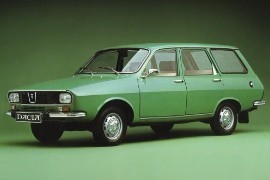DACIA 1300 Break Models/Series Timeline, Specifications & Photos
First production year: 1972
Engines: Gasoline
Body style: Wagon (station wagon, estate, combi, touring)
Developed on the same platform as the French-built Renault 12, the Dacia 1300 break was a licensed vehicle produced in Eastern Europe, in Romania.
While the Western countries were concerned about high-powered vehicles and the U.S. government worked to make the CAFE agreement, Eastern Europe tried to build their own cars. It was easier for Eastern Germany and Czechoslovakia since they already had a rich past experience with vehicles, but Romania was a newbie at this game. Its government decided to cut a deal with Renault (which was state-owned) and started producing the Renault 12 in a factory-built for that purpose a few years before for the Renault 8.
The first Dacia 1300 sedan appeared in 1969. Three years later, the young brand started to assemble (from CKD) the station wagon version of the Renault 12. It featured the same horizontal headlights with rounded corners and a black grille adorned by a shield shape in the middle, where the carmaker installed its logo. Behind the rear doors that Dacia carried over from the sedan, there was another glass panel on the sides of the trunk area. In the back, a sloped liftgate ended the vehicle.
Inside, it was the same straightforward design for the dashboard, which sported the three dials in front of the driver. The two-spoke steering wheel didn't feature the horn button. That one was placed on the side, on a stack, and that remained a brand characteristic until the Dacia Logan appeared decades later.
Under the hood, Renault offered Dacia's a 1.3-liter pushrod engine that provided just 54 horses. It paired it with a four-speed manual gearbox and sent the power to the front wheels.
